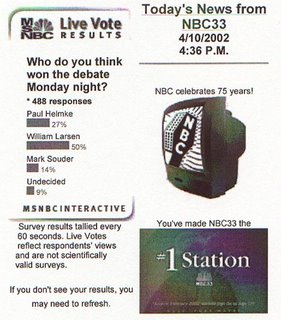Fair Tax or Flat Tax
The fair tax or flat tax proposals look good as stated, but when you look at the data, you may change your mind. The fair tax as proposed is a sales tax of 23% with a rebate to Americans based on the number of dependents. Both proposals are to be revenue neutral. Both proposals say large savings could be achieved by eliminating the IRS and companies saving on compliance costs. However, are these the same things as being revenue neutral to the individual taxpayer?
Current standard deduction for a family is $10,700; personal exemptions are worth $3,400.
A family of four under current law has $24,300 in income offsets. If you make less than this, your current tax bill is zero. Now add in two $1,000 child tax credits and your income offset is $42,850.
The first $15,650 of taxable income is taxed at just 10%. The next bracket is at $63,700 and is just 15%. Both are less than the 23% sales tax rate. The fact of the matter is a family making $100,000 under the current tax law would pay $7,790 in taxes. Under the fair tax law using a 23% sales tax, the taxes would be $23,000. They then would get some credit back. Would the credit be equal to $15,210?
How about a family making $40,000 a year? Their sales tax if they spent their $40,000 would be $9,200 while under current law their tax bill is zero. Would they get $9,200 back and when would it be sent? Is this mailed monthly or yearly? If yearly what do people on low incomes to do while they wait for a check worth 23% of their income?
Here is the problem in a nutshell. According to the IRS total income before exemptions (Social Security, interest, capital gains, S-corporations, wages, pensions, farm income, etc) is less than $7 trillion. Current IRS federal income tax collected is over $1.2 Trillion. This is 17.1% of all income before exemptions are included.
Wage income in the US totals about $5.5 Trillion of which 85% is subjected to Social Security’s 10.6% OASI and DI’s 1.8% tax. Medicare applies a 2.9% tax on all wages. The flat tax does not cover Medicare or Social Security Taxes. These would be in addition to the 23% sales tax.
Another major problem is what to do with those who have saved diligently and now are in retirement. The money saved was taxed. The income earned on savings was taxed. Now when they go to spend that money they will be taxed again at 23%. Roth IRA’s are to be free of Federal Income Taxes. This was done to promote savings. Sounds like a bait and switch tactic.
The tax code is a mess. However, replacing the current tax on income to a tax on spending will be double taxation for many. The ability to pay may be dependent on not just income, but spending. I propose doing away with all special exemptions. How you spend, your money is up to you. If you want to buy a home, great, do not make others subsidize your loan. If you want to send your kids to college, great. What exemptions do is transfer you tax to someone else and theirs to you, which in the end does little for either of you in terms of taxes being paid. Indiana has a tax system that allows a certain standard deduction and one for exemptions. It applies a flat tax to the taxable portion. It is easy to understand. We could easily convert the federal income tax to this method and have just one page to fill out. Everyone would be able to figure their taxes with a lot less compliance costs.



0 Comments:
Post a Comment
<< Home